ONLINE COURSE:
Quick, Easy, and Highly Effective Assessment of Multiple Methods of Writing
Successful strategies for helping every student write at their own maximum potential.
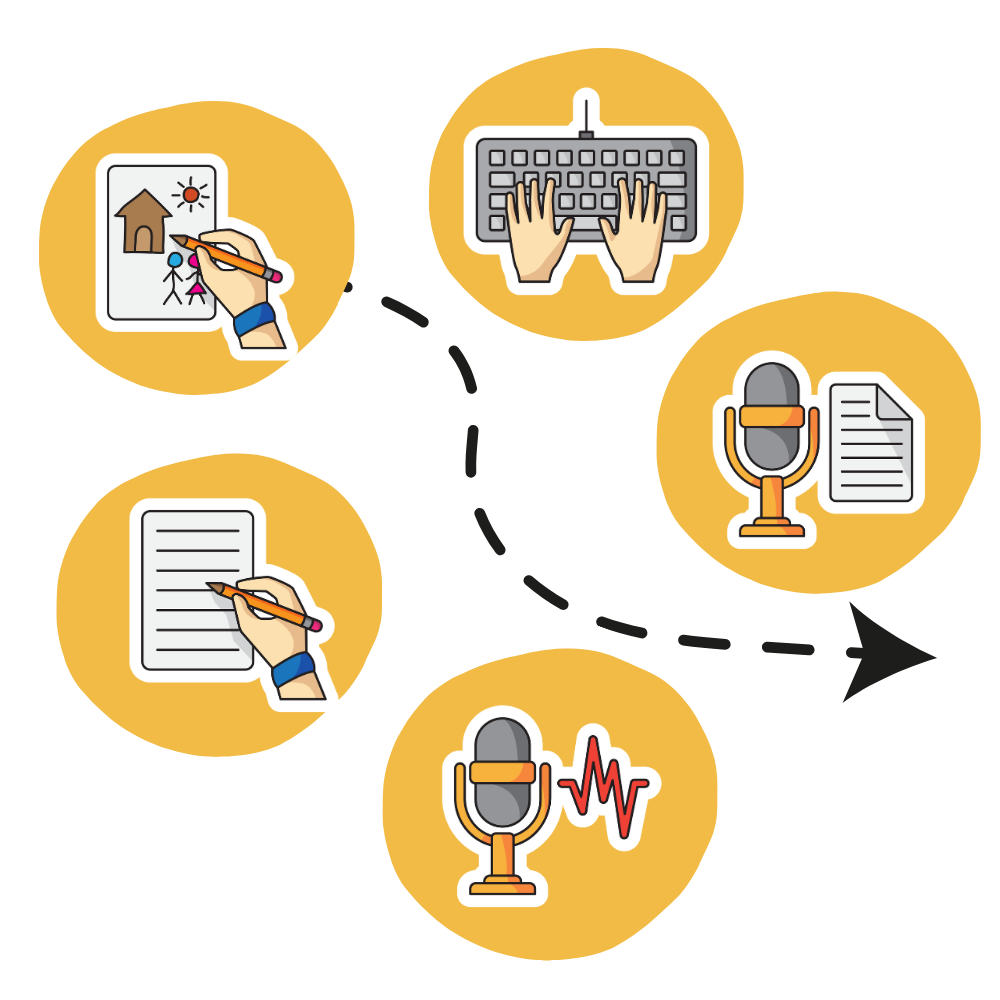
“Typing didn’t fix it; output is still tiny.”
“We tried speech-to-text once; it was a mess.”
“Progress tracking lives in a dozen spreadsheets.”
“My student’s ideas are great, but the pencil (or keyboard) slows everything down.”
Help every learner find their best way to write.
The Online Assessment of Writing Methods (OAWM) gives you measurable comparisons across methods.
This allows you to choose the most effective method and monitor your progress over time.

Writing is an essential life skill.
It’s more than just putting words on paper for a grade. It’s how we share who we are. Writing helps children (and adults!) express their identity, connect with others, and build confidence not just in what they know, but in who they are. It’s a powerful tool for self-expression, reflection, and authentic communication.
Every child can write at their maximum potential.
No matter their skill level, every student has the ability to express their thoughts, ideas, and personality. When we provide the right tools and strategies, we empower every child to communicate in a way that’s meaningful to them and that’s where true learning and growth begin.

This course is for...
Classroom teachers (K–12) who need a quick, data-driven way to differentiate writing supports
Special educators & resource teachers running IEPs/MTSS who want clear method- by-method evidence
OTs, SLPs, and learning specialists aligning therapy goals with classroom writing demands
Educational therapists & tutors who need a repeatable process for progress tracking
Course Outline
Section 1: Writing Is an Essential Life Skill
Explore how writing builds confidence, identity, and connection and why it’s a foundational skill for every child, not just an academic task.
Section 2: Introduction to the Five Methods of Writing Production
Get to know the five methods students produce writing: drawing, handwriting, typing, voice recording, and speech recognition.
Section 3: Comparison of Writing Methods
Learn how to assess and compare writing methods to identify the most effective approach for every child’s strengths and needs.
Section 4: Step-by-Step Instructions for the Online Assessment of Writing Methods
Get guided steps for administering the online assessment, interpreting the results, and using that data to inform your support strategies. You'll also meet Matthew, a remarkable student whose journey brings these tools to life. Through his real-world case study, you'll see what worked, what didn’t, and how the right methods and mindset can make all the difference. His story is honest, inspiring, and packed with lessons you can apply immediately.
Section 5: Timeline Evaluation
Discover how to evaluate growth across different writing methods using a structured timeline, so you can adapt and refine your approach as students grow.
Section 6: Conclusion and Next Steps
What’s Included in the Course
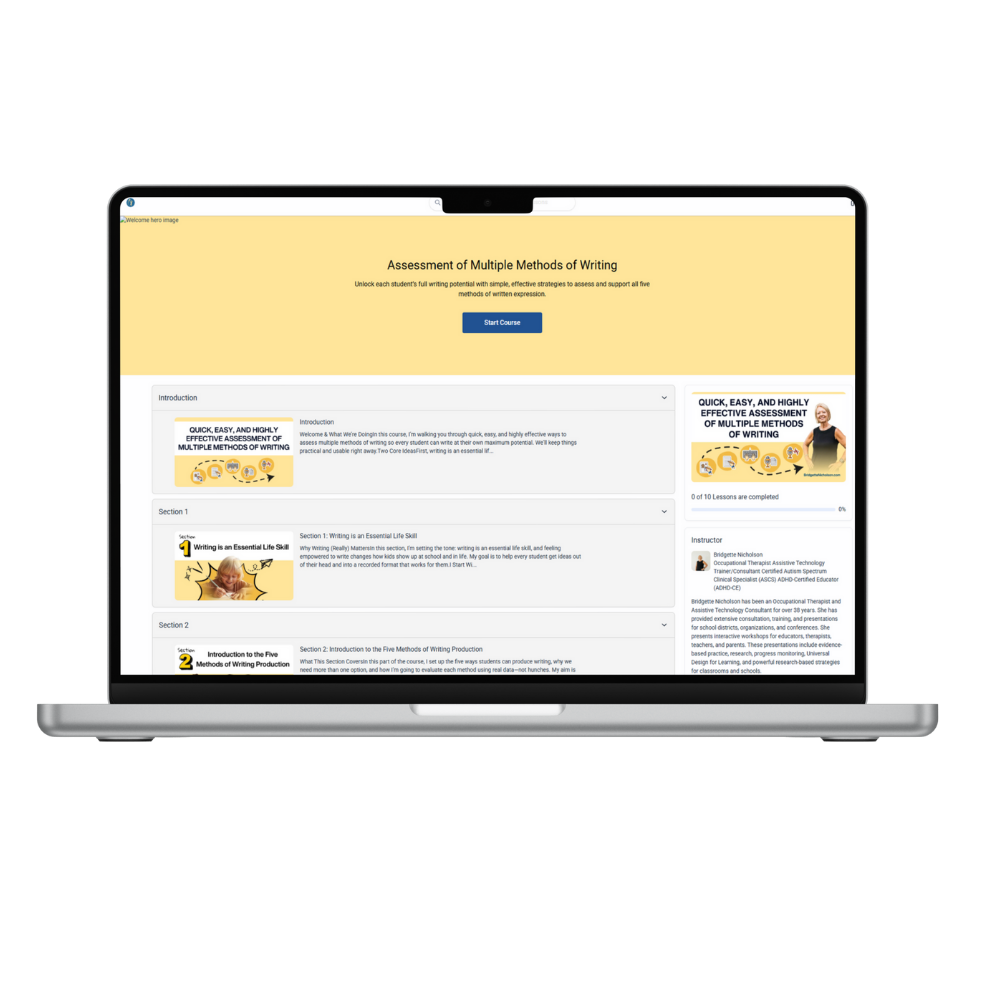
Self-paced video Lessons
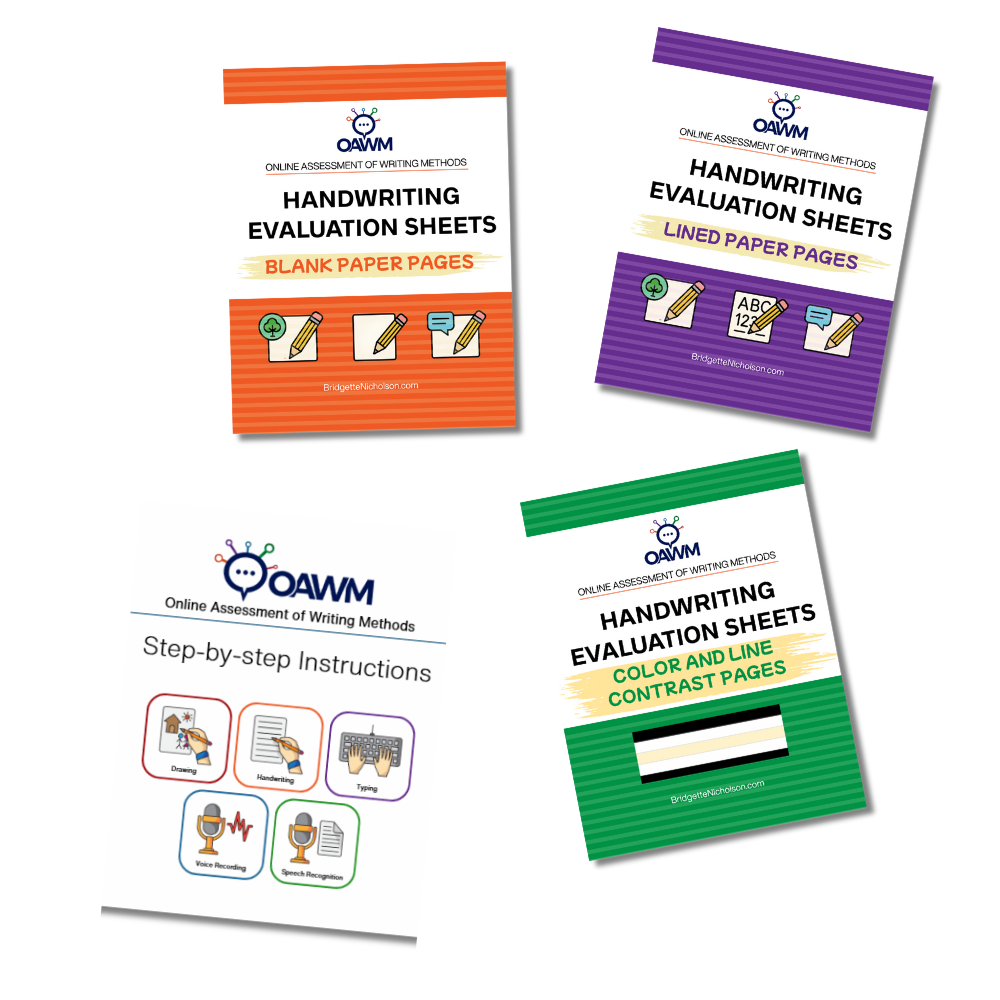
Printable Worksheets, Posters and Step by step guides
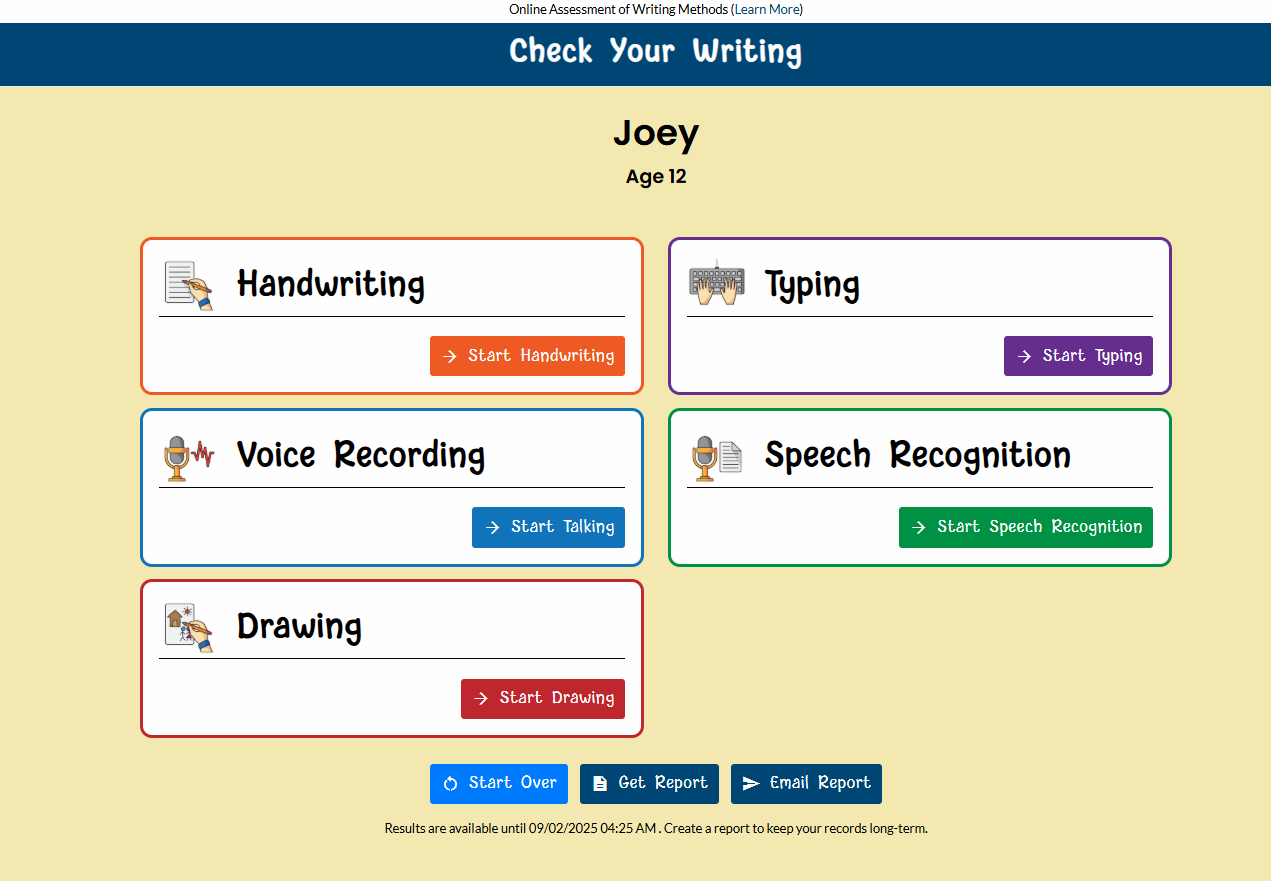
Free access to the Online Assessment tool
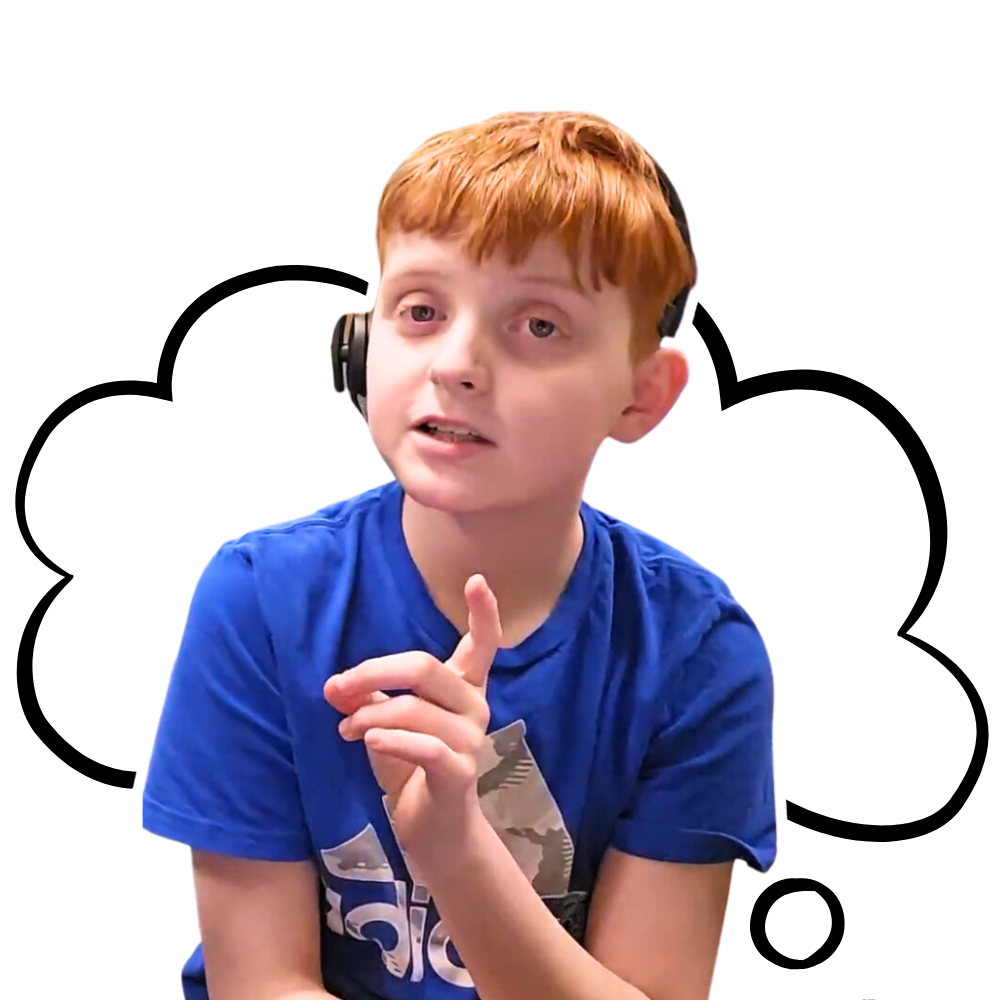
Real-Life Case Study:
Meet Matthew
Pricing
$47
One-time payment. Forever access.
No subscriptions, no expiration—just clear, practical tools to evaluate drawing, handwriting, typing, voice recording, and speech recognition for any learner.
Course Objectives
Identify and describe the five primary methods of writing production
Drawing, handwriting, typing, voice recording, and speech recognition.
Explain when and why each method would be most appropriate
Learn how to match the right writing method to each individual student’s needs and strengths.
Administer and interpret data from the Online Assessment of Writing Methods
Evaluate student writing performance across multiple methods using structured, accessible tools.
Use assessment data to support educational and therapeutic planning
Make informed, data-driven decisions to support writing development at every level.
Develop and implement at least one writing activity or support plan
Incorporate two or more writing methods into a plan that aligns with Universal Design for Learning (UDL) principles to meet the needs of an individual child.
Instructor
Bridgette Nicholson
Occupational Therapist / Assistive Technology Consultant / Certified Autism Spectrum Clinical Specialist (ASCS)
ADHD-Certified Educator (ADHD-CE)
Bridgette Nicholson is a highly experienced Occupational Therapist and Assistive Technology Consultant with over 38 years of experience. She has worked extensively with school districts, organizations, and conferences, providing consultation, training, and presentations. Bridgette is known for her interactive, fast-paced workshops that are designed for educators, therapists, teachers, and parents.These 1 and 2-day workshops cover a wide range of topics, including evidence-based practice, research, progress monitoring, Universal Design for Learning, and powerful research-based strategies for classrooms and schools.


Frequently Asked Questions
How long do I have access?
Your access is indefinite—it never expires. You can log in anytime at BridgetteNicholson.com to revisit lessons, videos, and PDFs.
What’s included with my enrollment?
Self-paced video lessons you can watch anytime
Step-by-step videos + instruction PDFs for evaluating the five writing methods (drawing, handwriting, typing, voice recording, speech-to-text)
Free access to the Online Assessment of Writing Methods (OAWM) to run side-by-side comparisons and capture clear data
Worksheets & templates
Handwriting worksheets to support practice and skill growth
Do I earn CEUs/Continuing Education credits with this course?
There are no CEU points attached to this course. If you need to update your continuing units, please visit our course website for current CEU-eligible options. We’re planning to add CEU courses soon—we’ll notify you when they’re available.
What is your refund policy for the course?
We want you to be satisfied with your course purchase. If you are not happy with the course for any reason, you may request a full refund within 7 days of your purchase.
To request a refund, please send an email to [email protected] with your purchase details. Once your refund is processed, your access to the course will be revoked. If you have any questions, feel free to contact us thru email or our website chat widget. Review our terms and conditions here.
